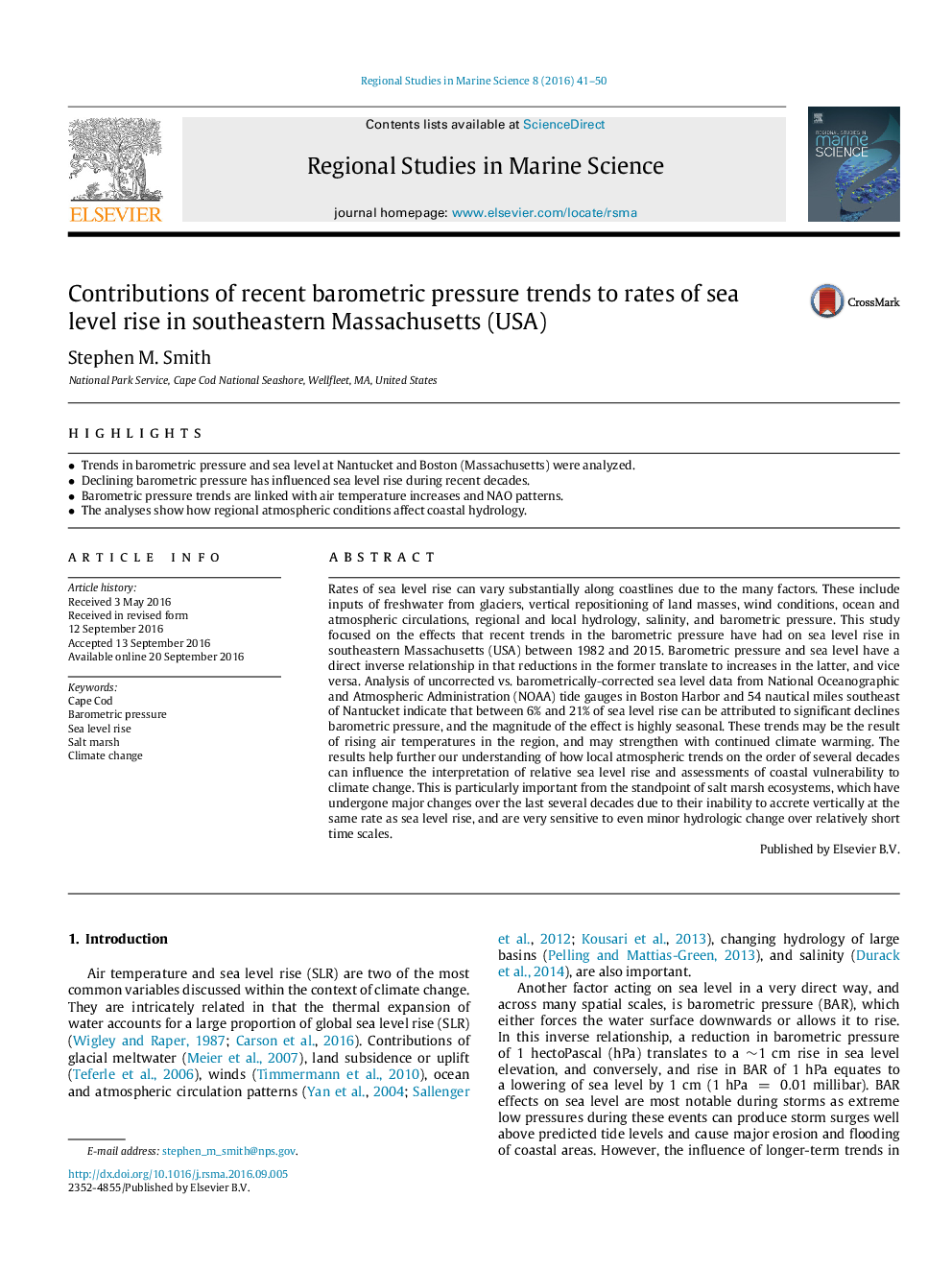| Article ID | Journal | Published Year | Pages | File Type |
|---|---|---|---|---|
| 5758123 | Regional Studies in Marine Science | 2016 | 10 Pages |
Abstract
Rates of sea level rise can vary substantially along coastlines due to the many factors. These include inputs of freshwater from glaciers, vertical repositioning of land masses, wind conditions, ocean and atmospheric circulations, regional and local hydrology, salinity, and barometric pressure. This study focused on the effects that recent trends in the barometric pressure have had on sea level rise in southeastern Massachusetts (USA) between 1982 and 2015. Barometric pressure and sea level have a direct inverse relationship in that reductions in the former translate to increases in the latter, and vice versa. Analysis of uncorrected vs. barometrically-corrected sea level data from National Oceanographic and Atmospheric Administration (NOAA) tide gauges in Boston Harbor and 54 nautical miles southeast of Nantucket indicate that between 6% and 21% of sea level rise can be attributed to significant declines barometric pressure, and the magnitude of the effect is highly seasonal. These trends may be the result of rising air temperatures in the region, and may strengthen with continued climate warming. The results help further our understanding of how local atmospheric trends on the order of several decades can influence the interpretation of relative sea level rise and assessments of coastal vulnerability to climate change. This is particularly important from the standpoint of salt marsh ecosystems, which have undergone major changes over the last several decades due to their inability to accrete vertically at the same rate as sea level rise, and are very sensitive to even minor hydrologic change over relatively short time scales.
Related Topics
Physical Sciences and Engineering
Earth and Planetary Sciences
Oceanography
Authors
Stephen M. Smith,
